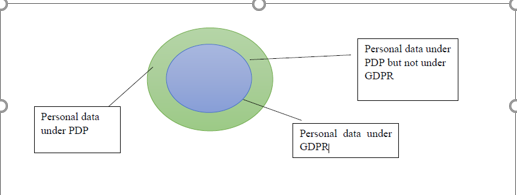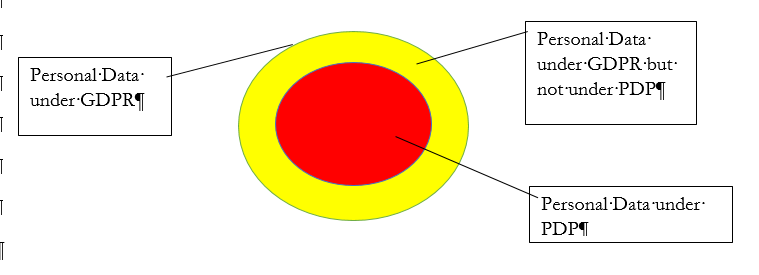Lord Jonathan Mance on the future relationship between the United Kingdom and Europe after Brexit
Nicole Grohmann, a doctoral candidate at the Institute for Comparative and Private International Law, Dept. III, at the University of Freiburg, has kindly provided us with the following report on a recent speech by Lord Jonathan Mance.
On Wednesday, 15 July 2020, the former Deputy President of the Supreme Court of the United Kingdom (UKSC), Lord Jonathan Mance, presented his views on the future relationship between the United Kingdom and Europe after Brexit in an online event hosted by the Juristische Studiengesellschaft Karlsruhe. This venerable legal society was founded in 1951; its members are drawn from Germany’s Federal Constitutional Court, the Federal Supreme Court, the office of the German Federal Prosecutor, from lawyers admitted to the Federal Supreme Court as well as judges of the Court of Appeals in Karlsruhe and the Administrative Court of Appeals in Mannheim. In addition, the law faculties of the state of Baden-Württemberg (Heidelberg, Freiburg, Tübingen, Mannheim, Konstanz) are corporate members. Due to Corona-induced restrictions, the event took place in the form of a videoconference attended by more than eighty participants.
After a warm welcome by the President of the Juristische Studiengesellschaft, Dr. Bettina Brückner (Federal Supreme Court), Lord Mance shared his assessment of Brexit, drawing on his experience as a highly renowned British and internationally active judge and arbitrator. In the virtual presence of judges from the highest German courts as well as numerous German law professors and scholars, Lord Mance elaborated – in impeccable German – on the past and continuing difficulties of English courts dealing with judgments of the European Court of Justice (ECJ) and the European Court of Human Rights (ECtHR) and the future legal struggles caused by the end of the transition period on the withdrawal of the United Kingdom from the European Union on 31 December 2020. Lord Mance’s speech was followed by an open discussion regarding the most uncertain political and legal aspects of Brexit.
In his speech, Lord Mance highlighted the legal difficulties involved in the withdrawal of his country from the European Union. Since Lord Mance himself tends to picture the British as being traditional and generally pragmatic, he named Brexit as a rare example of a rather unpragmatic choice. Especially with regard to the role of the United Kingdom as a global and former naval power, Lord Mance considered Brexit a step backwards. Besides the strong English individualism, which has evolved over the past centuries, the United Kingdom did not only act as an essential balancing factor between the global players in the world, but also within the European Union. Insofar, the upcoming Brexit is a resignation of the United Kingdom from the latter position.
Subsequently, Lord Mance focussed on the role of the European courts, the European Court of Justice and the European Court of Human Rights and their judgments in the discussions leading to Brexit. Both European courts gained strong importance and influence in the UK within the first fifteen years of the 21st century. Especially, the ECtHR is of particular importance for the British legal system since the Human Rights Act 1998 incorporated the European Convention on Human Rights into British law. Lord Mance described the Human Rights Act 1998 as a novelty to the British legal system, which lacks a formal constitution and a designated constitutional court. Apart from the Magna Charta of 1215 and the Bill of Rights of 1689, the British constitutional law is mainly shaped by informal constitutional conventions instead of a written constitution such as the German Basic Law. Following the Human Rights Act 1998 and its fixed catalogue of human rights, the British courts suddenly exercised a stricter control over the British executive, which initially gave rise to criticism. Even though the British courts are not bound by the decisions of the ECtHR following the Human Rights Act 1998, the British participation in the Council of Europe soon started a dialogue between the British courts and the ECtHR on matters of subsidiary and the ECtHR’s margin of appreciation. The UK did not regard the growing caseload of the ECtHR favourably. Simultaneously, the amount of law created by the institutions of the European Union increased. Lord Mance stressed the fact that in 1973, when the United Kingdom joined the European Economic Community, the impact of the ECJ’s decision of 5 February 1963 in Van Gend & Loos, C-26/62, was not taken into account. Only in the 1990s, British lawyers discovered the full extent and the ramifications of the direct application of European Union law. The binding nature of the ECJ’s decisions substantiating said EU law made critics shift their attention from Strasbourg to Luxembourg.
In line with this development, Lord Mance assessed the lack of a constitutional court and a written constitution as the main factor for the British hesitance to accept the activist judicial approach of the ECJ, while pointing out that Brexit would not have been necessary in order to solve these contradictions. The EU’s alleged extensive competences, the ECJ’s legal activism and the inconsistency of the judgments soon became the primary legal arguments of the Brexiteers for the withdrawal from the EU. Especially the ECJ’s teleological approach of reasoning and the political impact of the judgments were mentioned as conflicting with the British cornerstone principles of parliamentary sovereignty and due process. Lord Mance stressed that the so-called Miller decisions of the Supreme Court in R (Miller) v Secretary of State [2017] UKSC 5 and R (Miller) v The Prime Minister, Cherry v Advocate General for Scotland (Miller II) [2019] UKSC 41, dealing with the parliamentary procedure of the withdrawal from the EU, are extraordinary regarding the degree of judicial activism from a British point of view. In general, Lord Mance views British courts to be much more reluctant compared to the German Federal Constitutional Court in making a controversial decision and challenging the competences of the European Union. As a rare exception, Lord Mance named the decision in R (HS2 Action Alliance Ltd) v Secretary of State for Transport [2014] UKSC 3, in which the UKSC defended the British constitutional instruments from being abrogated by European law. Indeed, Lord Mance also expressed scepticism towards the jurisprudential approach of the ECJ, because inconsistences and the need of political compromise could endanger the foreseeability and practicability of its decisions. Especially with regard to the recent decision of the German Constitutional Court of 5 May 2020 on the European Central Bank and the Court’s approach to ultra vires, Lord Mance would have welcomed developing a closer cooperation between the national courts and the ECJ regarding a stricter control of the European institutions. Yet this important decision came too late to change Brexiteers’ minds and to have a practical impact on the UK.
Finally, Lord Mance turned to the legal challenges resulting from the upcoming end of the transition period regarding Brexit. The European Union (Withdrawal) Acts 2018 and 2020 lay down the most important rules regarding the application of EU instruments after the exit day on 31 December 2020. In general, most instruments, such as the Rome Regulations, will be transposed into English domestic law. Yet, Lord Mance detected several discrepancies and uncertainties regarding the scope of application of the interim rules, which he described as excellent bait for lawyers. Especially two aspects mentioned by Lord Mance will be of great importance, even for the remaining Member States: Firstly, the British courts will have the competence to interpret European law, which continues to exist as English domestic law, without the obligation to ask the ECJ for a preliminary ruling according to Art. 267 TFEU. In this regard, Lord Mance pointed out the prospective opportunity to compare the parallel development and interpretation of EU law by the ECJ and the UKSC. Secondly, Lord Mance named the loss of reciprocity guaranteed between the Member States as a significant obstacle to overcome. Today, the United Kingdom has to face the allegation of ‘cherry picking’ when it comes to the implementation of existing EU instruments and the ratification of new instruments in order to replace EU law, which will no longer be applied due to Brexit. Especially with regard to the judicial cooperation in civil and commercial matters and the recast of the Brussels I Regulation, the United Kingdom is at the verge of forfeiting the benefit of the harmonized recognition and enforcement of the decisions by its courts in other Member States. In this regard, Lord Mance pointed out the drawbacks of the current suggestion for the United Kingdom to join the Lugano Convention, mainly because it offers no protection against so-called torpedo claims, which had been effectively disarmed by the recast of the Brussels I Regulation – a benefit particularly cherished by the UK. Instead, Lord Mance highlighted the option to sign the Hague Convention of 30 June 2005 on Choice of Court Agreements which would allow the simplified enforcement of British decisions in the European Union in the case of a choice of court agreement. Alternatively, Lord Mance proposed the ratification of the Hague Convention of 2 July 2019 on the Recognition and Enforcement of Foreign Judgments. So far, only Uruguay and Ukraine have signed this new convention. Nevertheless, Lord Mance considers it as a valuable option for the United Kingdom as well, not only due to the alphabetical proximity to the other signatories.
Following his speech, the event concluded with a lively discussion about the problematic legal areas and consequences of Brexit, which shall be summarised briefly. Firstly, the President of the German Supreme Court Bettina Limperg joined Lord Mance in his assessment regarding the problem of jurisprudential inconsistency of the ECJ’s decisions. However, like Lord Mance she concluded that the Brexit could not be justified with this argument. Lord Mance pointed out that in his view the ECJ was used as a pawn in the discussions surrounding the referendum, since the Brexiteers were unable to find any real proof of an overarching competence of the European Union. Secondly, elaborating on the issue of enforceability, Lord Mance added that he considers the need for an alternative to the recast of the Brussels I Regulation for an internationally prominent British court, such as the London Commercial Court, not utterly urgent. From his practical experience, London is chosen as a forum mainly for its legal expertise, as in most cases enforceable assets are either located in London directly or in a third state not governed by EU law. Hence, Brexit does not affect the issue of enforceability either way. Finally, questions from a constitutional perspective were raised regarding the future role of the UKSC and its approach concerning cases touching on former EU law. Lord Mance was certain that the UKSC’s role would stay the same regarding its own methodological approach of legal reasoning. Due to the long-standing legal relationship, Lord Mance anticipated that the legal exchange between the European courts, UK courts and other national courts would still be essential and take place in the future.
In sum, the event showed that even though Brexit will legally separate the United Kingdom from the European Union, both will still be closely linked for economic and historical reasons. As Lord Mance emphasized, the UK will continue to work with the remaining EU countries in the Council of Europe, the Hague Conference on PIL and other institutions. Further, the discrepancies in the Withdrawal Acts will occupy lawyers, judges and scholars from all European countries, irrespective of their membership in the European Union. Lastly, the event proved what Lord Mance was hoping to expect: The long-lasting cooperation and friendship between practitioners and academics in the UK and in other Member States, such as Germany, is strong and will not cease after Brexit.

